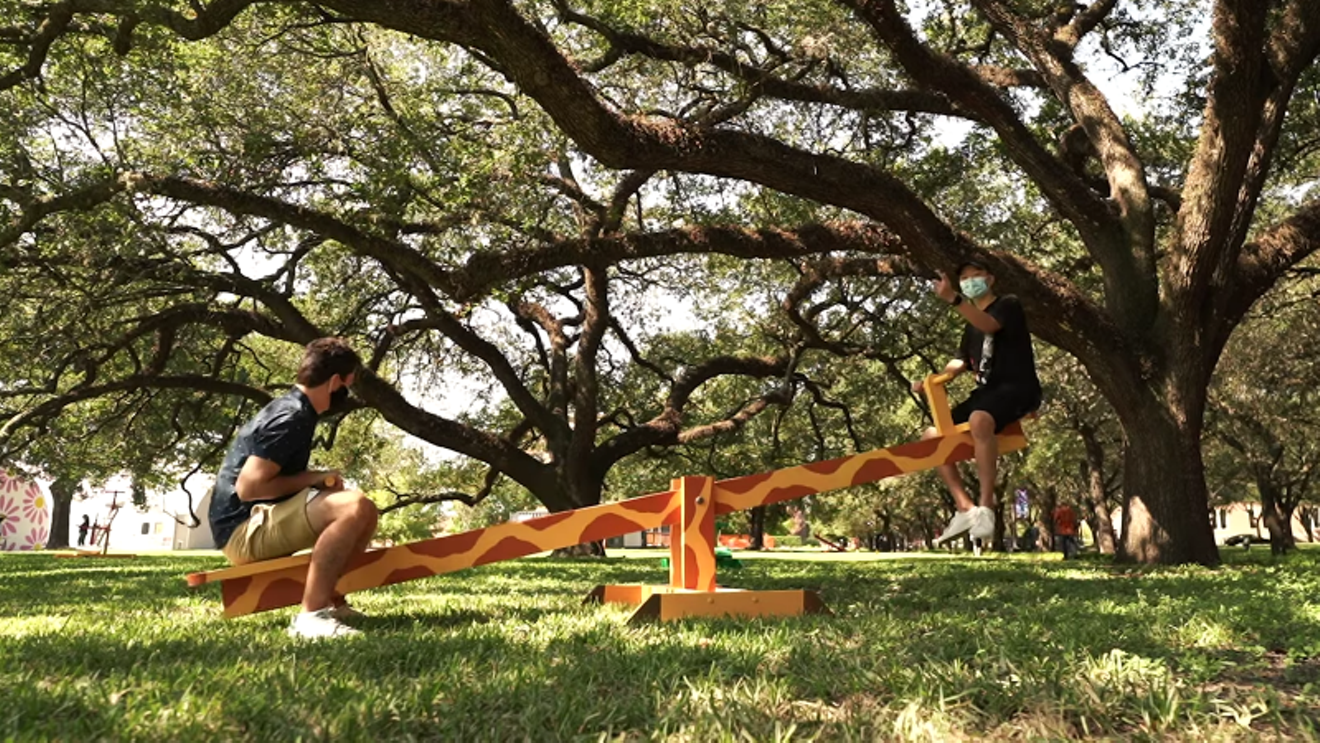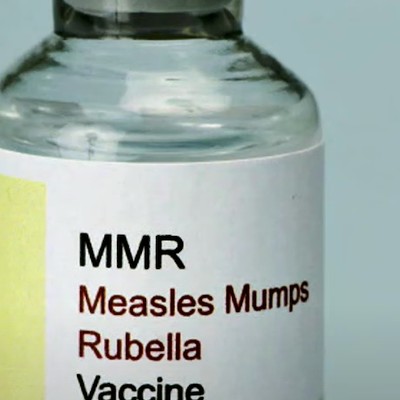Thanks to the lack of standardized case reporting and testing protocols across Texas universities, it can be tough to compare how well schools are doing in fighting the coronavirus, but it’s safe to say that Houston’s schools have done a better job than many other Texas universities at corralling COVID-19.
In Austin, Waco, Lubbock and College Station hundreds and hundreds of students and employees at the University of Texas, Baylor University, Texas Tech and Texas A&M have contracted COVID-19 in recent months.
As of Monday, UT had tallied 1,417 cases since August 26 among students, faculty and staff. Baylor had logged 1,492 since August 1, Texas Tech had racked up a staggering 2,905 coronavirus cases since August 1 and Texas A&M had reported 3,491 cases since August 8.
On the other side of the spectrum, the University of Houston as of Tuesday had only logged a total of 420 COVID-19 cases since all the way back in March according to its public coronavirus dashboard, and Rice University had reported a cumulative 91 positive cases since August 1 as of Monday according to its online COVID-19 landing page.
The University of St. Thomas in Houston’s Museum District doesn’t have a public coronavirus dashboard, but the school disclosed that as of November 19 it’s recorded only 47 positive cases among students and staff since the fall semester began on August 24.
The Houston Press spoke with coronavirus response leaders at Rice, UH and St. Thomas about what measures have led to their schools’ relative success in limiting the spread of COVID-19. We found that while policies around mask-use and social distancing are pretty uniform across the three schools, there are big differences in how seriously each institution is prioritizing student COVID-19 testing.
Texas Southern University did not respond to multiple requests for comment from the Press about its COVID-19 metrics and policies for the current semester, and does not publicly disclose its positive coronavirus case metrics in a public-facing dashboard.
Rice, UH and St. Thomas all require students, staff and faculty to wear face masks at all times on campus other than when eating or drinking. Each of these three schools have also primarily shifted to offering classes either fully online or with the option for students to attend virtually for the ones still offering on-campus instruction, and have all adjusted their classrooms and lowered class sizes to make sure the few students who are taking classes in-person are at least six feet apart from one another.
All three schools either wrapped-up all classes ahead of Thanksgiving or will have shifted any in-person classes to online-only following the holiday. All final exams and assignments at each school will be administered remotely so that college kids won’t have to travel from home to school and back between Thanksgiving and the winter holiday break, decreasing the risk that students could catch the virus at home and bring it back with them.
In addition to mask mandates and social distancing rules that forbid big gatherings and student parties, each of these local universities contends that the relatively small number of students on-campus compared to semesters past has also helped them keep cases low.
“Many of our classes are online only, although about half of our classes are in-person, so we’ve reduced the density of people on the campus. It’s probably about 30 to 40 percent of a normal day today,” said Kevin Kirby, Rice’s Vice President for Administration and Chair of Rice’s Crisis Management Advisory Committee.
St. Thomas Police Chief H. E. Jenkins, head of St. Thomas’s emergency management task force, said that only 205 of the school’s 3,500 students chose to live on-campus this semester. “Before COVID, we could fit 400 in the res halls, so we’re at about half capacity right now,” Jenkins said.

University of Houston President Renu Kator urged UH Cougars to mask-up in a student welcome video in August.
Screenshot
“People living on campus is down significantly,” said Chris Stipes, Director of Media Relations at UH. “We were typically just over 8,000 living on campus, and so we’re right around 3,000 [this semester].” Stipes also said that only 17 percent of UH students are taking any in-person classes, and that many of them who chose the in-person option at the beginning of the semester decided to move to taking those classes virtually as the semester progressed.
COVID-19 testing policies are where these schools have the least in common. Rice has taken by far the most aggressive approach to testing of the three; all students were tested at the start of the fall semester and all students living on-campus are required to be tested once per week. Off-campus students who regularly visit Rice in-person have to get tested at variable rates depending on how much contact they have with the campus community.
In addition to partnering with Baylor College of Medicine and Houston Methodist for its COVID-19 tests, Rice scientists have also developed their own rapid-result saliva test that’s been piloted at M.D. Anderson which will be rolled-out more widely on campus starting in the spring.
“Part of our testing strategy from the very beginning was we don’t want one testing provider to have problems with a test, or something happens or a lab could shut down… it’s really important that we have a robust capability for testing,” Kirby said.
“Part of our testing strategy from the very beginning was we don’t want one testing provider to have problems with a test, or something happens or a lab could shut down… it’s really important that we have a robust capability for testing,” Kirby said.
tweet this
At St. Thomas, on-campus students and athletes were tested at the beginning of the semester, and are required to get tested once a month. Off-campus students are not required to get tested, even if they come on campus. In lieu of mandatory testing, St. Thomas students who come on campus are required to answer a COVID-19 symptom screener questionnaire and have their temperatures taken each day at one of five locations across campus.
Upon clearing the screener and getting a non-fever temperature readout, each student is given a color-coded wristband. The colors change every day so that students, staff and campus police can identify and report anyone who’s skipped the process, Jenkins said.
Strangely, UH hasn’t implemented any sort of mandatory testing schedule for students or staff according to Dr. Stephen Spann, UH’s Vice-President for Medical Affairs, which means the total positive case numbers listed on its dashboard are all self-reported by UH community members to the administration.
“We did not require a screening or periodic surveillance. Some institutions did, [but] that is not something that the CDC has strongly recommended in their guidance, they leave it up to the institution,” Spann said, although he did explain that coronavirus tests are available on-campus for any interested students or employees.
UH also won’t be requiring students to get tested when they come back to campus for the spring semester. Rice will require testing at the start of the new semester for all students who live or regularly come on-campus, and St. Thomas will require re-entry testing for only on-campus students and athletes.
Another unique quirk of Rice’s COVID-19 response is its COVID-19 Community Court, a student-run internal judicial system for students who are reported by their peers for breaking rules about things like mask-wearing, gathering in unsafe groups or attending un-socially distanced parties. So far, Rice’s COVID Court has heard more than 60 cases, and has meted out punishments ranging from requiring offenders to watch educational videos about the dangers of the coronavirus, or making them write apology letters.
Rice has also acted more aggressively than UH or St Thomas in terms of adjusting the spring semester schedule; Rice has already joined Texas Southern, Baylor and Texas A&M in cancelling Spring Break out of fears that allowing students so much time off at once could lead to unsafe travelling and partying that could bring more coronavirus cases back in the aftermath.
Neither UH nor St. Thomas have decided to cancel Spring Break yet, but representatives from both schools said it’s not out of the realm of possibility depending on how the pandemic progresses over the next several months.
“Some schools are already announcing that Spring Break is going to be cancelled...we have not made that decision at this point, because we’re trying to see what’s out there. We feel like that’s too far of a judgment call because we don’t know what it’s gonna be like in March at that point, and with the hope of new vaccines coming out and those kind of things, we just don’t know where we’re gonna be,” said Jenkins.
As the number of new daily infections continues to rise in Texas and the greater Houston area, representatives from all three schools said they still plan to offer some classes in-person, but could shift to 100 percent online instruction if local coronavirus numbers get significantly worse, although no one cited any one specific stat that would trigger such a rollback.
Emboldened by successfully keeping cases low this semester and by student feedback asking for more in-person classes, Rice is actually planning to increase its in-person class cap from 25 students to 40 next semester. But even though that’s the goal, Kirby explained that Rice would consider ratcheting back to the old cap if COVID-19’s spread gets too out of control in the months ahead.
“If you go back to the early part of the summer, we were considering class sizes of 50, and then there was a spike here in Houston in late July, early August as we were gearing up to open up for classes, so we rolled back our in-person class size to 25,” Kirby said. “We might well do the same again if things get dramatically worse in Houston over the next couple of months.”







